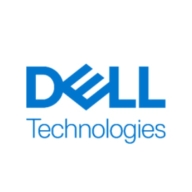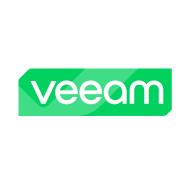

Dell OpenManage Integration for VMware vCenter and Veeam Data Platform serve in the virtualized environments management and data protection market. Dell OpenManage has the upper hand due to its seamless VMware integration, while Veeam stands out for comprehensive backup capabilities.
Features: Dell OpenManage Integration offers systems management, including hardware monitoring and firmware management, and seamless VMware integration. Veeam Data Platform provides backup, recovery, and replication features, focusing on data protection and disaster recovery.
Ease of Deployment and Customer Service: Dell OpenManage Integration is straightforward to deploy in VMware environments with strong customer service. Veeam Data Platform allows deployment across various environments with reliable customer support, emphasizing deployment versatility.
Pricing and ROI: Dell OpenManage is cost-effective within VMware vCenter, offering ROI through operational efficiencies. Veeam Data Platform, although higher in initial cost, provides significant ROI through its extensive data protection features.
| Product | Market Share (%) |
|---|---|
| Veeam Data Platform | 8.8% |
| Dell OpenManage Integration for VMware vCenter | 2.9% |
| Other | 88.3% |

| Company Size | Count |
|---|---|
| Small Business | 216 |
| Midsize Enterprise | 99 |
| Large Enterprise | 138 |
Veeam Data Platform is designed for modern data management, providing secure backups, intelligent data insights, and resilience. It ensures data is protected, recoverable, and manageable across complex environments, supporting business continuity effectively.
Veeam Data Platform stands out with its robust capabilities in data protection, orchestrated recovery, and efficient management. It offers a simple interface while ensuring data security and availability, which is critical for businesses. The platform's compatibility with virtual machines, databases, and applications across VMware, Hyper-V, and cloud environments makes it a versatile choice for backup and disaster recovery strategies. Users gain confidence from its performance, from secure backups to facilitating effective infrastructure monitoring.
What are the key features of Veeam Data Platform?Veeam Data Platform is widely implemented by industries needing robust disaster recovery plans and data management solutions. It is particularly valuable in environments utilizing hybrid cloud solutions, protecting mission-critical workloads, and ensuring business continuity. Businesses leverage its capabilities to safeguard data integrity and facilitate long-term retention through efficient infrastructure management.
We monitor all Virtualization Management Tools reviews to prevent fraudulent reviews and keep review quality high. We do not post reviews by company employees or direct competitors. We validate each review for authenticity via cross-reference with LinkedIn, and personal follow-up with the reviewer when necessary.